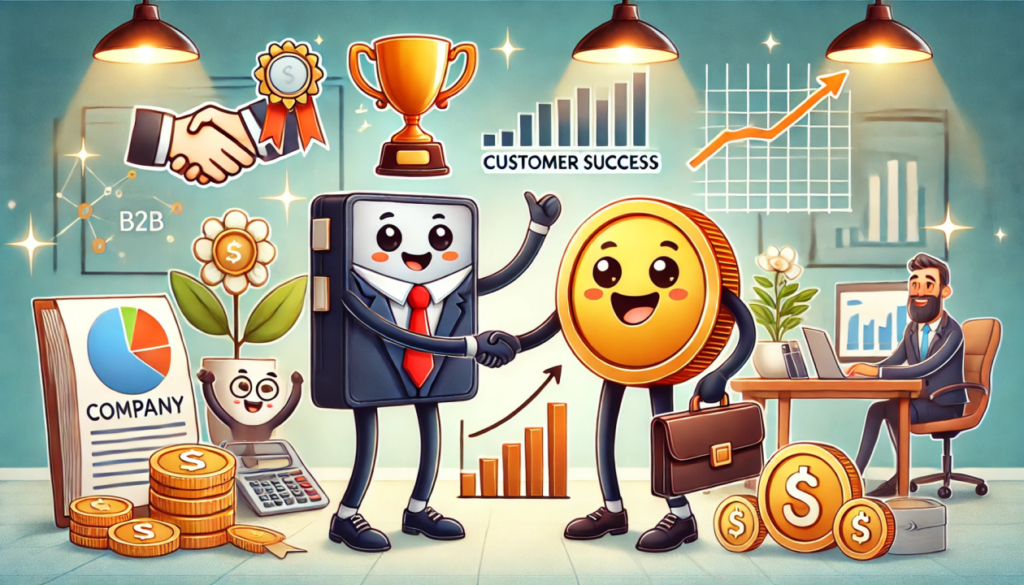
If B2B marketing was like a romantic relationship, the customer journey would be the courtship. But customer success? That’s the happily-ever-after. The problem is, too many businesses treat customer success as an afterthought,…as if they forgot an anniversary – such a big mistake. HUGE. Let us take a light-hearted yet data-driven journey to review why customer success needs to be front and center of your B2B marketing strategy, along with some actionable ways to win them over.
Why Customer Success Is the Real MVP
• Churn Reduction: Say Goodbye to Breakups
Nobody likes churn – least all your CFO. According to HubSpot, it can cost from 5 to 25 times more to acquire a new customer than to retain one. Churn rates can be the silent killer. A 5% increase in customer retention can boost profits 25% to 95% (Harvard Business Review).
Customer success ensures that your customers remain engaged and do not fade away. By offering proactive support, conducting regular check-ins, and supplying essential resources for their success, you’re tackling potential issues before they escalate. Picture it as relationship counseling – except the stakes involve revenue, rather than Netflix password sharing.
• Increasing Customer Loyalty: Creating Raving Fans
Happy customers stick around. Better yet? They send their friends your way. In fact, 92% of B2B buyers are more likely to purchase after reading a trusted customer testimonial (Gartner). As clients begin to see value in your product, this means that renewals will be easier, as will the advocacy on behalf of the brand. You cannot engineer loyalty with “Thank you for your business” emails; it comes about when there is continued nurturing through personal attention, and the customer feels like the ultimate rock star in your orbit.
• Aiding Upsell and Cross-Sell Opportunities: Getting More Bang for Your Buck
More interestingly, loyal customers don’t just stay; they also tend to spend more. Studies show that existing customers are 50% more likely to try new products and spend 31% more compared to new customers (Marketing Metrics). Customer success teams play a crucial role here, identifying opportunities to introduce new products or services that align with your customer’s evolving needs. A solid relationship lays the foundation for upselling without feeling pushy – because nothing says “I care” like a well-timed, useful suggestion.
How to Build a Customer Success Strategy That Works
Now that we’ve clarified the reasons behind customer success being B2B’s best-kept secret, let’s delve into tactics. Here are five actionable steps to position customer success as the cornerstone of your marketing strategy.
1. Define Success, Together
Success is going to look different for every customer. For one, it might be increasing efficiency; for another, it’s about increasing the ROI. Make sure that this correlation in goals starts with a discovery session. Having a clear idea of what “winning” looks like means everyone’s on the same page – and scoring points.
Pro Tip: Develop a customer success plan that outlines milestones, timelines, and KPIs so that everyone is on the same page and knows what to expect.
2. Invest in Onboarding Like It’s a First Date
First impressions mean everything, and poor onboarding is the equivalent of chewing loudly on the first date: a total deal-breaker. Frictionless onboarding sets the stage for the rest of the relationship: guide them through step by step, with training resources and personal attention that makes customers confident from Day 1 onward.
Fun Fact: According to TSIA, customers who rate onboarding as exceptional are 3.5 times more likely to renew their contract.
3. Communicate Like a Partner, Not a Seller
Nobody – yes, nobody – likes being sold to. Certainly not your existing customers. Deliver value by leading regular check-ins, success stories, and education-based communications.
Try This: Segment your customers based on their lifecycle stage and tailor your communications. For example, send optimization tips to seasoned users and quick-start guides to newbies.
4. Use Data to Be Psychic (or Just Proactive)
Your CRM is so much more than just an inbox – it’s a treasure trove of insight. Use data to anticipate issues, flag churn risks, and identify upsell opportunities.
For example, when a customer has not logged into your platform in some time, that’s when he needs a friendly reminder. With tools like Gainsight and HubSpot Service Hub, it isn’t hard to be attentive.
5. Celebrate Success, Loudly
When your customers win, celebrate it like it’s your win. Share their stories in case studies, on social media, or even in webinars. This furthers your value in their minds, too, and will create content that attracts new leads.
Pro Tip: Set up a “Customer Champions” program, recognizing and rewarding loyal ambassadors. A little appreciation goes a long way.
The ROI of Customer Success: Numbers Don’t Lie.
Let’s bring this home with some hard-hitting stats. According to Gartner, businesses with a strong customer success program see a 20% to 30% improvement in retention and a 10% to 20% increase in upsell revenue. Meanwhile, companies that ignore customer success? They’re playing the dangerous game of churn roulette.
And here’s the kicker: Forrester Research reveals that 72% of businesses say improving customer success is their top priority, yet many fail to execute. The opportunity for savvy marketers to outpace the competition is enormous.
Customer Success Is Everyone’s Business
Customer success in B2B is not a ‘nice to have’; it’s your invisible weapon. It makes churn go away, creates loyalty, and unlocks new revenue streams. But above all, it converts customers into long-term partners.
So, what’s holding you back? Make customer success one of your most focused areas today. After all, happy customers are the gift that keeps giving-and who does not love a gift that grows your bottom line?
Remember: If marketing is about getting the customer, customer success is about keeping them. And in the end, that’s what makes all the difference.
